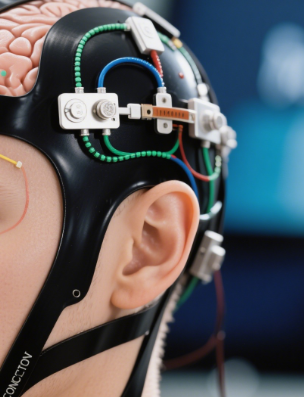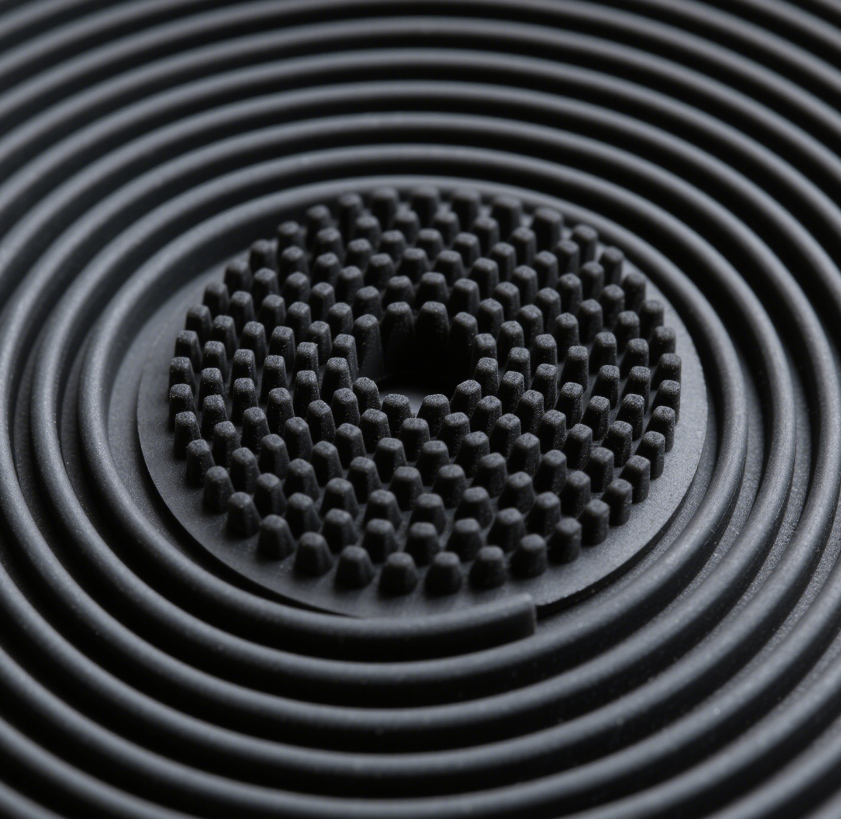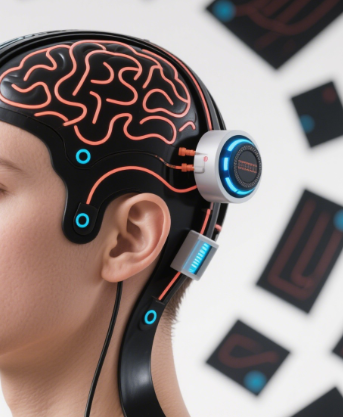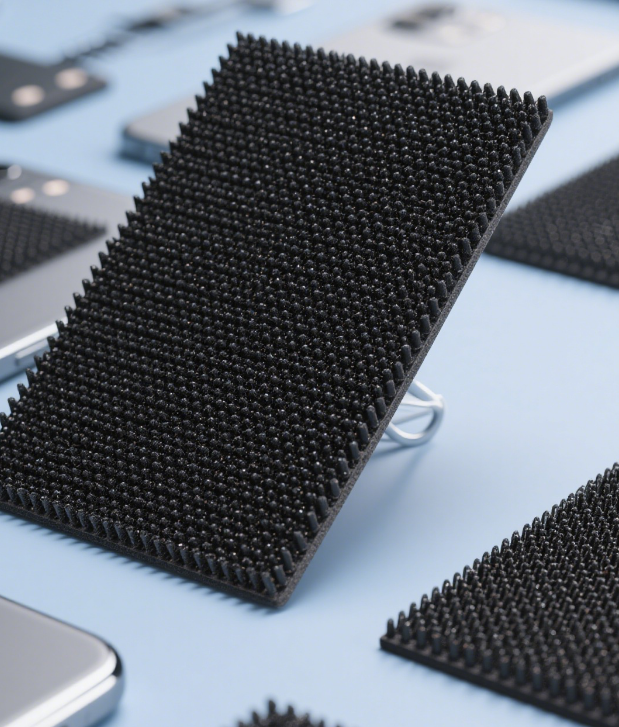Research on the Application of Conductive Rubber in Human Body Motion Detection
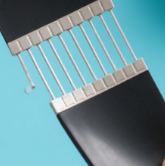 I. Introduction
I. Introduction
In fields such as smart wearable devices, medical health monitoring, and sports analysis, the demand for human body motion detection technology is growing increasingly. As a material with unique electrical conductivity and flexibility, conductive rubber has shown great application potential in human body motion detection. This article will delve into the application of conductive rubber in human body motion detection, including its principles, advantages, and specific application scenarios.
II. Characteristics of Conductive Rubber and the Principles of Human Body Motion Detection
(I) Characteristics of Conductive Rubber
Conductive rubber is a composite material formed by uniformly dispersing conductive fillers (such as carbon black, metal powders, carbon nanotubes, etc.) in a rubber matrix. It combines the flexibility and elasticity of rubber with good electrical conductivity. It can deform when subjected to external forces while maintaining the continuity of the conductive path. In addition, conductive rubber also has good corrosion resistance, wear resistance, and aging resistance, making it suitable for use in complex environments.
(II) Principles of Human Body Motion Detection
When the human body moves, physical signals such as displacement, deformation, and pressure are generated in various parts of the body. As a sensor material, conductive rubber can convert these physical signals into electrical signals. Specifically, when conductive rubber is subjected to external forces, the distribution of the conductive fillers inside it will change, causing the resistance value to change. By detecting the change in the resistance value, relevant information about human body motion, such as the amplitude, speed, and direction of movement, can be obtained.
III. Advantages of Conductive Rubber in Human Body Motion Detection
(I) Flexibility and Comfort
Conductive rubber has flexibility and elasticity similar to human skin, and it can closely fit the human body surface without restricting or causing discomfort to human body movements. This makes it very suitable for making wearable motion detection devices, such as smart bracelets and sports clothing.
(II) High Sensitivity and Response Speed
Conductive rubber is very sensitive to small changes in external forces and can quickly detect the slight deformations and pressure changes caused by human body movements. With a fast response speed, it can capture the dynamic process of human body movements in real-time, providing accurate data support for sports analysis and monitoring.
(III) Customizability
The electrical conductivity and mechanical properties of conductive rubber can be customized by adjusting the type and content of the conductive fillers and the formulation of the rubber matrix. This enables it to meet the needs of different human body motion detection scenarios. For example, in scenarios where large amounts of exercise need to be detected, conductive rubber with higher strength and electrical conductivity can be designed; in scenarios where subtle movements need to be detected, conductive rubber with higher sensitivity can be designed.
(IV) Low Cost and Easy Processability
Compared with other conductive materials, the production cost of conductive rubber is relatively low, and it is easy to be processed into various shapes and sizes. This gives it obvious advantages in large-scale production and application, enabling the cost of human body motion detection devices to be reduced and the market competitiveness of the devices to be improved.
IV. Specific Application Scenarios of Conductive Rubber in Human Body Motion Detection
(I) Wearable Motion Detection Devices
- Smart Bracelets and Watches: In smart bracelets and watches, conductive rubber can be used as a sensor to detect the movement state of the wrist, such as the number of steps, the distance traveled, and the movement speed. By integrating the conductive rubber sensor into the watchband or the interior of the watch dial, human body motion data can be obtained in real-time, and the data can be transmitted to a mobile phone or other smart devices through wireless communication technology, providing users with sports monitoring and health management services.
- Sports Clothing: Weaving conductive rubber fibers or films into sports clothing can create smart clothing with motion detection functions. For example, setting conductive rubber sensors at parts such as the knees and elbows of sports clothing can detect the bending angle and movement amplitude of the joints, providing a basis for the analysis of athletes’ movement postures and the prevention of sports injuries. In addition, conductive rubber can also be used to detect physiological signals such as the human heart rate and respiration, achieving comprehensive monitoring of the human body’s health status.
(II) Medical Health Monitoring
- Rehabilitation Training Monitoring: In the field of medical rehabilitation, conductive rubber can be used to make sensors for rehabilitation training equipment, such as gait analysis systems and limb movement rehabilitation trainers. By detecting the movement data of patients during the rehabilitation training process, such as step length, step frequency, and joint range of motion, doctors can evaluate the rehabilitation effect of patients and formulate personalized rehabilitation training programs.
- Elderly and Disabled Care: For the elderly and the disabled, conductive rubber sensors can be installed on devices such as furniture and wheelchairs to detect their daily activity status, such as getting up, sitting down, and walking. When abnormal situations are detected, such as falling or staying still for a long time, the system will automatically issue an alarm and notify the nursing staff in a timely manner, improving the safety and efficiency of nursing.
(III) Sports Analysis and Training
- Athlete Training Analysis: In sports training, conductive rubber can be used to make sports analysis equipment, such as sports insoles and sports protective gear. By detecting data such as the pressure distribution on the soles of athletes’ feet and the force on the joints during exercise, coaches can understand whether the athletes’ movement techniques and actions are standardized, providing scientific guidance and improvement suggestions for athletes’ training.
- Sports Biomechanics Research: Conductive rubber sensors can also be used in sports biomechanics research. By collecting and analyzing the mechanical signals of various parts of the body during human body movement, the mechanical mechanisms and movement laws of human body movement can be studied, providing a theoretical basis for the design of sports equipment and the optimization of sports training methods.
V. Challenges Faced by Conductive Rubber in Human Body Motion Detection
(I) Stability of Sensor Performance
The performance of conductive rubber sensors is easily affected by factors such as environmental temperature, humidity, and usage time, resulting in resistance value drift and a decrease in sensitivity. Therefore, it is necessary to further study methods to improve the performance stability of conductive rubber sensors, such as using new types of conductive fillers, optimizing the formulation of the rubber matrix, and improving the packaging process of the sensors.
(II) Signal Processing and Data Analysis
The electrical signals generated by human body movements are usually weak and are easily interfered by noise. Therefore, it is necessary to study efficient signal processing and data analysis algorithms to improve the signal-to-noise ratio and detection accuracy of the signals. In addition, how to convert a large amount of motion data into valuable information and provide users with personalized sports suggestions and health management programs is also a problem that needs to be solved.
(III) Integration with Other Technologies
Human body motion detection usually requires the combination of multiple technologies, such as sensor technology, wireless communication technology, and data analysis technology. Conductive rubber sensors need to be organically integrated with other technologies to form a complete human body motion detection system. Therefore, it is necessary to study the interfaces and compatibility between conductive rubber sensors and other technologies to improve the integration and intelligence level of the system.
VI. Conclusions and Prospects
As a material with unique properties, conductive rubber has broad application prospects in human body motion detection. It has advantages such as flexibility, high sensitivity, customizability, and low cost, and can meet the needs of human body motion detection in different scenarios. However, conductive rubber also faces challenges such as the stability of sensor performance, signal processing and data analysis, and integration with other technologies in human body motion detection.
In the future, with the continuous development of materials science, electronic technology, and information technology, the performance of conductive rubber will be continuously improved, and its integration with other technologies will be closer. It is expected that the application of conductive rubber in the field of human body motion detection will be more extensive and in-depth, providing new impetus for the development of fields such as smart wearable devices, medical health monitoring, and sports analysis. At the same time, it is necessary to further strengthen the research and development of conductive rubber sensors, solve the challenges faced, and promote the continuous progress of human body motion detection technology.













